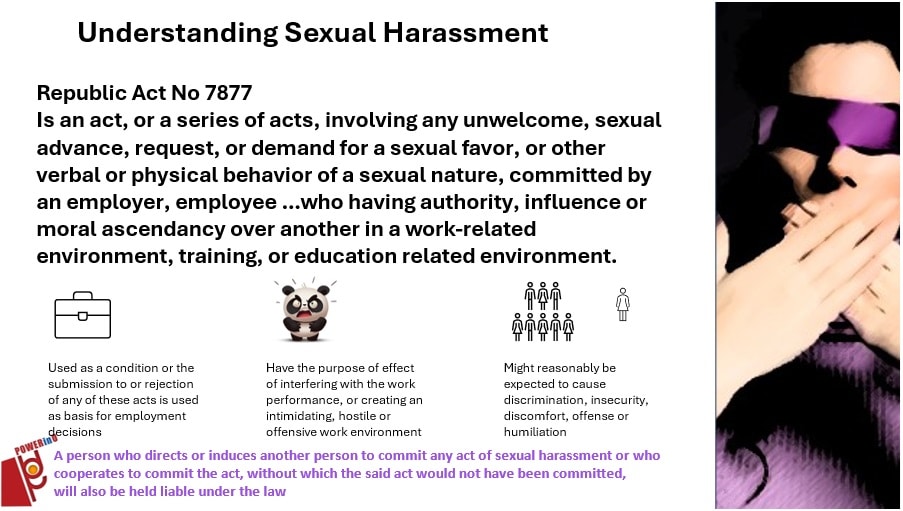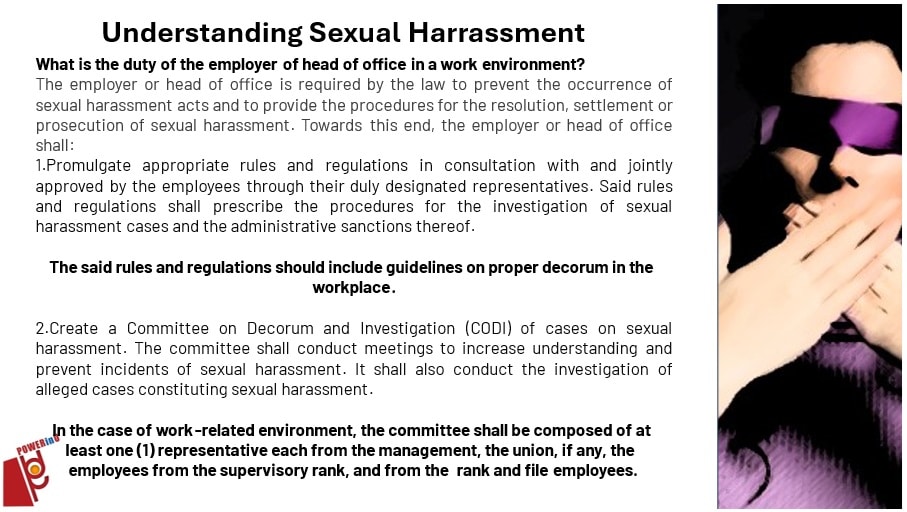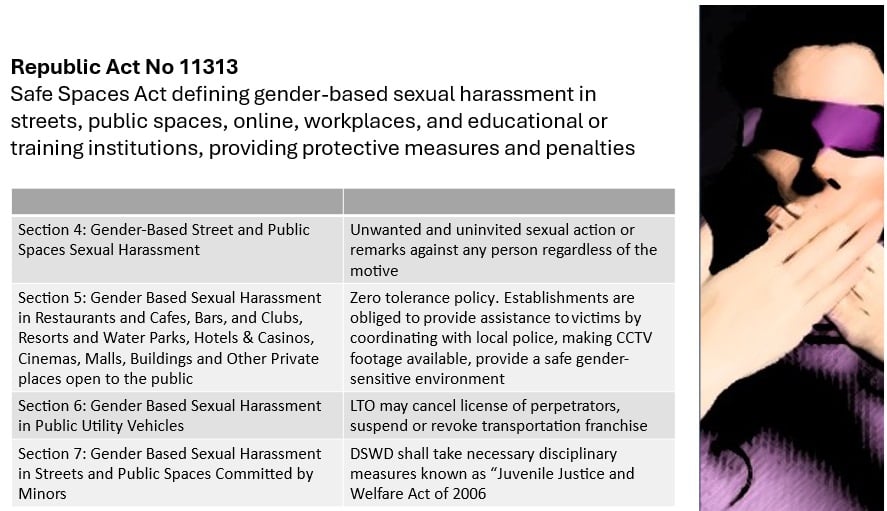
In today’s increasingly diverse work environments, creating a safe and inclusive workplace is not merely a legal obligation but a moral imperative. It also creates a culture of psychological safety resulting to higher employee engagement, increased productivity and sustained business growth.
Sexual harassment remains one of the most pressing issues within organizations, impacting employee morale, productivity, and overall workplace culture. Establishing a safe space to prevent and address sexual harassment is crucial for fostering an environment where all employees feel valued, respected, and safe. This article explores the various facets of creating such a space, including the importance of clear policies, training, support systems, and continuous improvement.
Understanding Sexual Harassment
Sexual harassment can be broadly defined as unwelcome sexual advances, requests for sexual favors, and other verbal or physical conduct of a sexual nature that creates a hostile, intimidating, or offensive work environment. In the Philippines, there are laws under Republic Act 7877 that makes sexual harassment in the workplace a criminal offense.

It manifests in various forms, including verbal comments, inappropriate touching, suggestive gestures, and even sexual assault. The consequences of sexual harassment can be severe, leading to psychological distress for victims, decreased productivity, increased turnover rates, and potential legal ramifications for organizations.
Given these realities, it is essential for organizations to take proactive measures to create a workplace culture that rejects sexual harassment and promotes respect.

In addition, Republic Act 11313 of 2018 has been enacted to also cast wider protection covers all gender-based violations in public spaces (streets, private places open to public, and public transportation.

Establishing Clear Policies
One of the first steps in creating a safe workplace is to establish clear, comprehensive anti-sexual harassment policies. These policies should define what constitutes sexual harassment, outline reporting procedures, and specify the consequences for violations. Key components of an effective policy include:
- Definitions and Examples: Clearly define sexual harassment and provide examples to ensure all employees understand what behavior is unacceptable.
- Reporting Procedures: Outline step-by-step procedures for reporting incidents of harassment. This should include multiple reporting channels (e.g., supervisors, human resources, anonymous hotlines) to assure employees that they can choose the best path for their situation.
- Investigation Protocols: Detail how complaints will be investigated, emphasizing confidentiality and fairness. Employees must know that their complaints will be taken seriously and handled promptly.
- Consequences for Violations: Specify the range of consequences for those found guilty of harassment, which could include disciplinary action up to termination. This underscores the organization’s commitment to a harassment-free environment.
- Policy Distribution: Ensure that all employees are aware of the policy by distributing it during onboarding, posting it in common areas, and making it accessible on the company intranet.
Training and Education
Establishing policies is just the beginning. Continuous education and training are vital to fostering a workplace devoid of harassment. Regular training sessions should cover the following:
- Understanding Harassment: Educate employees on the different forms of sexual harassment, helping them recognize both overt and subtle behaviors that may create a hostile environment.
- Bystander Intervention: Empower employees to intervene when they witness inappropriate behavior. Training should include strategies for safely and effectively addressing harassment as a bystander.
- Reporting Mechanisms: Familiarize employees with the reporting procedures outlined in the policy, making sure they understand how to report incidents without fear of retaliation.
- Cultural Competence: Discuss issues of diversity, equity, and inclusion to ensure that employees appreciate the unique challenges faced by individuals from diverse backgrounds when it comes to harassment.
- Leadership Training: Ensure that managers and supervisors receive specialized training to help them recognize their role in preventing harassment and responding appropriately when incidents occur.
Implementing a robust training program not only empowers employees to take action but also promotes a workplace culture that values respect and accountability.
Encouraging Open Communication
A significant barrier to addressing sexual harassment is the fear of retaliation or the belief that reporting will lead to negative consequences. To combat this, organizations must cultivate an atmosphere of open communication. Strategies to promote open dialogue include:
- Regular Check-Ins: Encourage managers to have regular one-on-one meetings with their team members to discuss concerns and gather feedback on workplace climate.
- Anonymous Surveys: Consider implementing anonymous surveys to assess employee perceptions of workplace safety, the effectiveness of harassment policies, and areas for improvement.
- Open-Door Policies: Foster an environment where employees feel comfortable approaching their supervisors or HR representatives with concerns, reinforcing that their voices matter.
By actively encouraging communication, organizations can uncover issues before they escalate and create a responsive environment to employees’ needs.
Support Systems
Providing support systems for victims of harassment is critical to creating a safe space. These may include:
- Counseling Services: Offer access to counseling or mental health services for employees who may experience distress due to harassment.
- Peer Support Groups: Establish peer support groups where employees can share their experiences in a safe setting, promote solidarity, and discuss coping strategies.
- Resources and Information: Make resources about sexual harassment, employee rights, and available support services easily accessible, whether through an intranet site or printed materials.
- Victim Advocacy: Consider appointing victim advocates within the organization who can provide guidance and support through the
- ALLYSHIP: A strong bedrock in creating a culture of safety in the workplace premised on education, empathy, and respect. Employees need to understand where they are in the continuum – Awareness (Am I aware of anti-sexual harassment laws, violence against women and children?) Learning (Do I recognize if I see violations of such?), Practicing (Do I actively stand up against violations of such?) , Allyship (Am in involved in programs that will create more affirmative actions against violence and discrimination against women?

